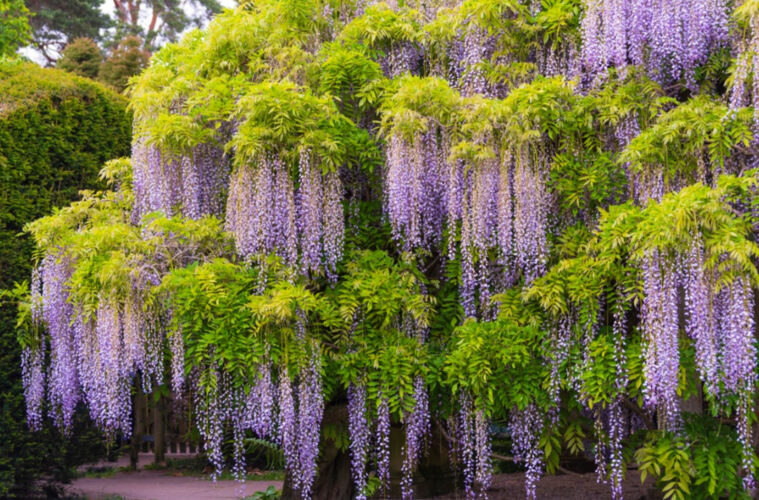A garden where you can find a casual arrangement of flowers and plants is an English cottage garden. Flowers are the main attractions of this type of garden. Imagine a flower bed filled with a profusion of hollyhocks, daisies, phlox, catmint, and foxgloves that are all mixed up and pouring out. Cottage gardens encourage exploration and inspire whimsy. Curving walkways, arbors adorned in roses, and white picket fences are frequent features in their designs.
Starting with a list of English cottage garden plants like foxgloves, Shasta daisies, catmint, and hollyhocks will help you arrange your unstructured flower garden. Although it may appear spontaneous, a traditional English cottage garden is controlled chaos and requires some forethought.
Delphinium
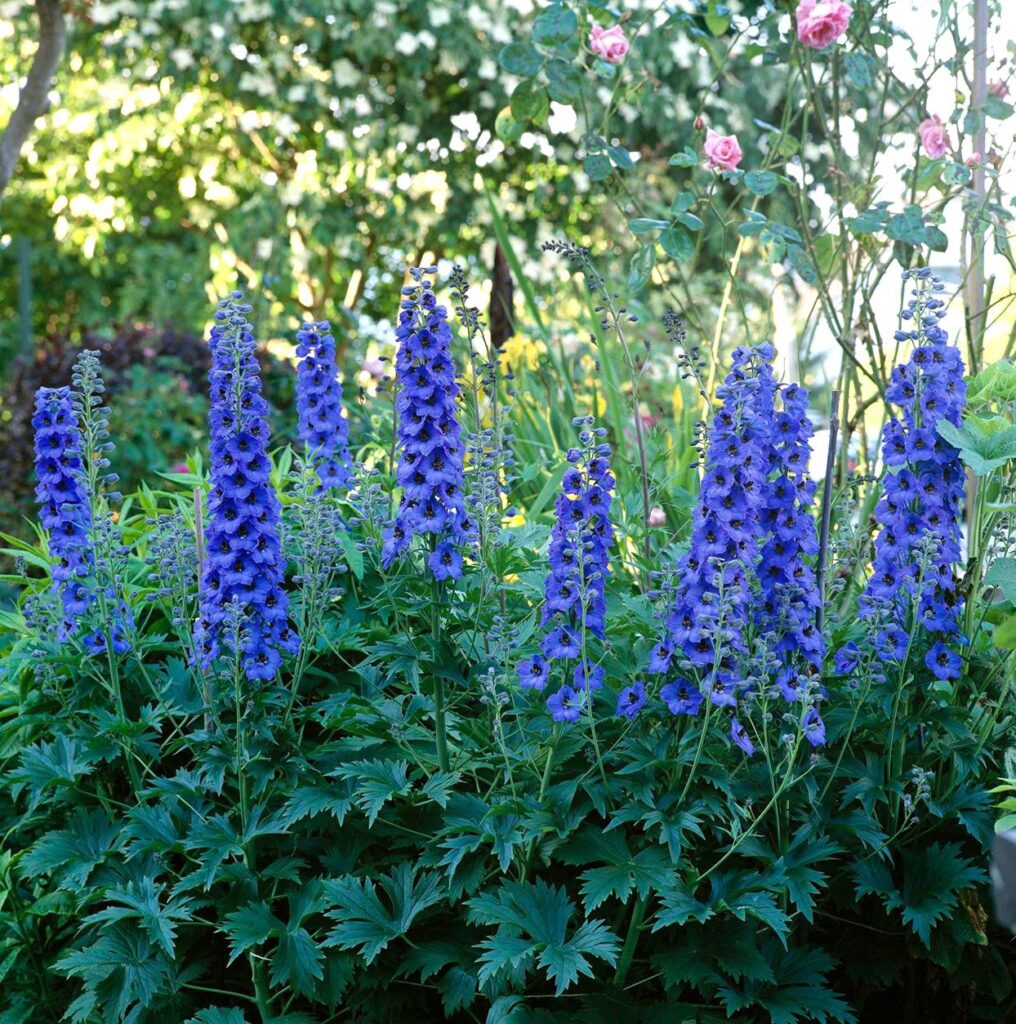
source: pinterest.com
Although pinks and reds can sometimes be seen, blues and purples make up the majority of delphinium colors. There are some gorgeous coral-colored variations as well as some uncommon ones that are yellow. These plants have lovely palm-shaped fern-like foliage that is a nice shade of green. Think of delphinium first if you are searching for plants for an English garden.
Due to the rarity of their blue blossoms, delphiniums are prized and planted. These lovely blues can be found in a wide range of hues and patterns. The deep, rich blue of many has a white center, which offers a striking contrast.
Rambling Roses
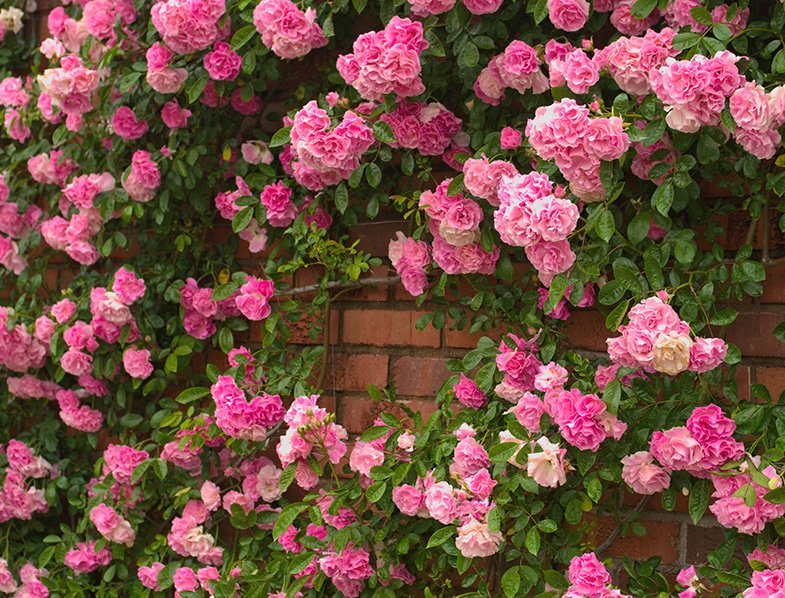
source: gardenbeast.com
In the middle of the summer, rambling roses are put on a beautiful display, producing clusters of usually small to medium-sized flowers, which are frequently followed by crimson or orange hips in the fall. The most preferred plant for an English garden is rambling roses.
The majority of ramblers have aggressive growth habits, making them perfect for concealing ugly walls, pergolas, sheds, and buildings. Even more, giant trees can be grown through them, or they can be supported by other climbers like Clematis viticella. The less rambunctious kinds work well for climbing trellises next to walls or rose arches.
Lavender
A beautiful addition to borders and perennial gardens, lavender, a herb with numerous culinary uses, offers sweeping drifts of color from early summer to fall. Lavender is perfect for making informal hedges because of its compact shrub-like structure, upright flower spikes, and silvery-green foliage. It can also be harvested to make potpourri, sachets, and floral arrangements that are aromatic in your English cottage garden.
Because it thrives in the milder environment of that nation and has long been a mainstay in English herb gardens, English lavender earned its name. This lavender is one of the garden’s most beautiful varieties because of its whorls of small blooms and gray-green foliage. Due to its low camphor level, it is one of the most cold-hardy types and the finest for culinary usage.
Hollyhocks
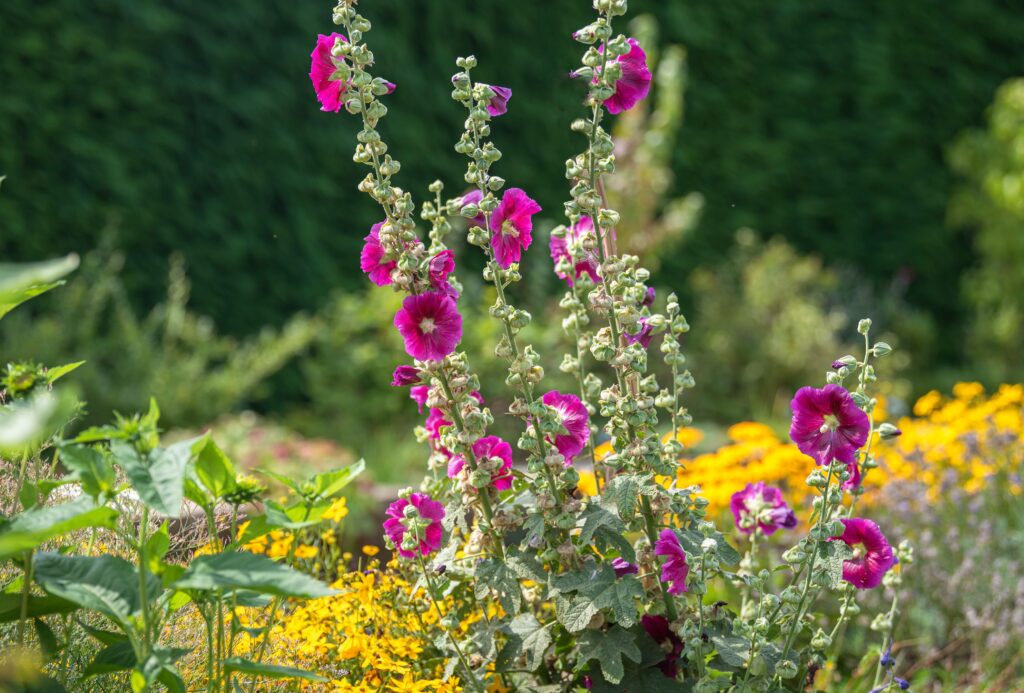
source: thespruce.com
Hollyhocks (Alcea rosea), a traditional component of cottage gardens, flower in the middle of the summer on towering spikes. They don’t need much maintenance, aside from staking and trimming the stalks after flowering, but they do need to be guarded against pests and fungi that cause illnesses like rust.
In addition to serving as a host plant for painted lady butterflies’ caterpillars, hollyhocks also draw other pollinators like bees and hummingbirds. An English cottage garden cannot be finished without a few hollyhocks around the edges.
Peony
Peonies grow and bloom throughout the spring and summer as herbaceous perennials. Each harvest time and winter, they shrink away before resuscitating from their rootstock in the spring. Tree Peonies, on the other hand, are a far more uncommon variety of peonies that you haven’t seen before. These woody shrubs resemble rose bushes in growth in any English garden design. They have enormous flowers supported by sturdy woody stalks.
Hydrangea
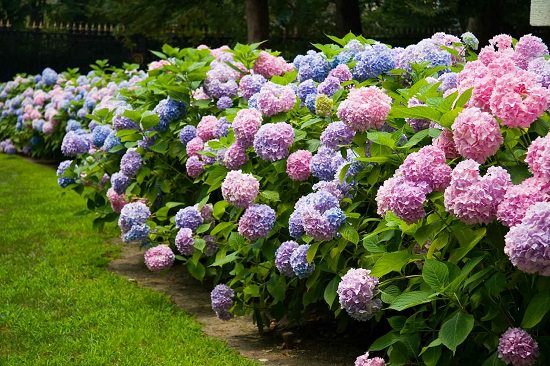
source: indiagardening.com
With flowers in a variety of hues, including white, numerous shades of blue and pink, maroon, crimson, and even pale green, hydrangeas have long been a favorite ornamental garden plant. According to the species, some hydrangeas have enormous, rounded flower heads, while others have a smaller, flatter, and more delicate blossoms.
The foliage also varies in shape. Planting hydrangea shrubs in the fall or early spring gives them time to develop a strong root system. Hydrangeas are typical English garden flowers that grow two feet or more per year.
Foxgloves
The bell-shaped, bee-friendly tubular pink flowers with a speckled center that grows in spires on foxgloves are the most favorite English cottage garden plants. The majority of foxgloves are biennial, which means that they establish their roots and leaves in the first year, and then bloom and produce seeds in the second year, before dying. But some foxglove species are perennial.
Foxgloves are plants with no problems. Young plants may require protection from slugs and snails. Foxgloves have ceased flowering by the middle of the summer and can be unattractive.
Lady’s Mantle
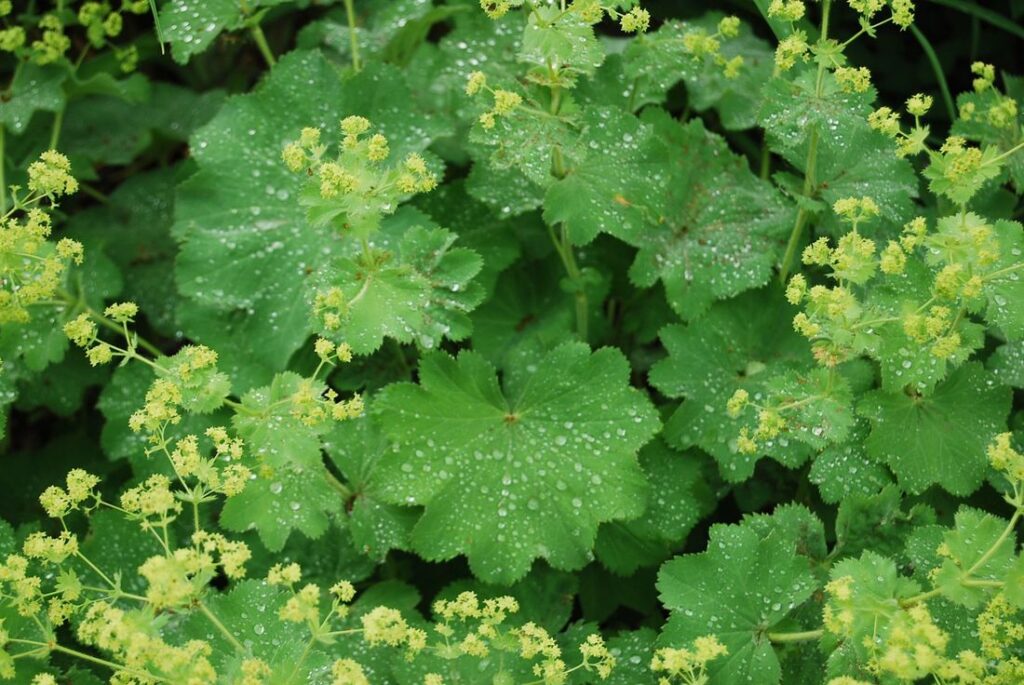
source: pinterest.com
Plant a lady’s mantle in your yard to give it a cozy cottage feel. It is a special plant in the list of English garden plants that is perennial with clumping, mounding growth and huge, circumvallate, scallop-edged leaves called lady’s mantle (Alchemilla Mollis). Along with being lovely in gardens, it is also useful to make lotions and soaps. Garden lovers grow them frequently in clusters as a ground cover for both sunny and shady regions.
The foliage is attractive all season long, despite the meager chartreuse flowers that bloom in bunches in late spring. In certain places, this plant is listed on government lists of invasive species. However, lady’s mantle does readily self-seed and, if you’re not careful, it has been known to spread outside the garden.
Japanese Anemone
Nothing compares to Japanese anemones for beauty in the late season. They fit in wonderfully with cottage gardens because of their bobbing, airy nature. Japanese anemones require soil that is moist yet drains well. The plants, especially the double-flowered types, can grow to a height of 4 feet and may require some staking.
The white-flowering heirloom “Honorine Jobert” has recently attracted a lot of attention, although Japanese anemones also come in pink, purple, and deep mahogany hues.
Wisteria
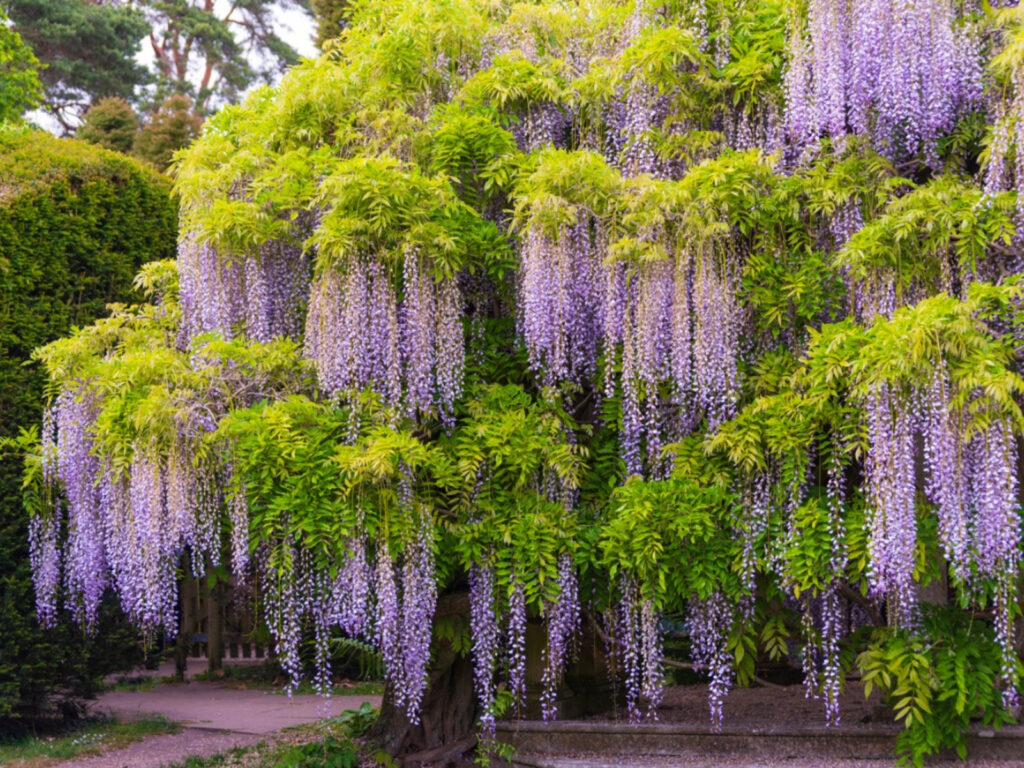
source: gardeningknowhow.com
Wisteria is a woody, deciduous vine. It is prized for its lengthy (12–18 inch) racemes of fragrant spring blooms (most often bluish or purplish, but occasionally pink or white). In the autumn, bean-like pods replace the flowers. Pinnate is the leaf form that has a feather-like shape. They may have toxicity so it is advisable to keep them away from pets and kids. Your English garden design will stand out beautifully with this beautiful plant.
Three main categories exist (two Asian and one American). The pods are one distinguishing trait, but they frequently have similar appearances that make it challenging to tell them apart. The American form is smooth, while the Asian variety is covered in fuzz.
Final Thoughts
Traditional English cottage gardens, which would include a lovely mixture of vegetables, fruit trees, flowers, and medicinal herbs along with animals fenced, with a rose-bowered gateway, were born out of the need for self-sufficiency. But in today’s modern cottage gardens, its brightly colored, self-seeding annuals and widely dispersing perennials have become more of a dominant influence.
Making your informal flower garden is simple, but if you want it to have the same “old world” appeal as traditional English Gardens, you must select plants with a variety of colors, sizes, and shapes. Select plants that look local and native even if they are not appearing like that. They must suit your hardiness zone and growing conditions. These English garden design ideas will help you to choose the best plants for your cottage garden.

